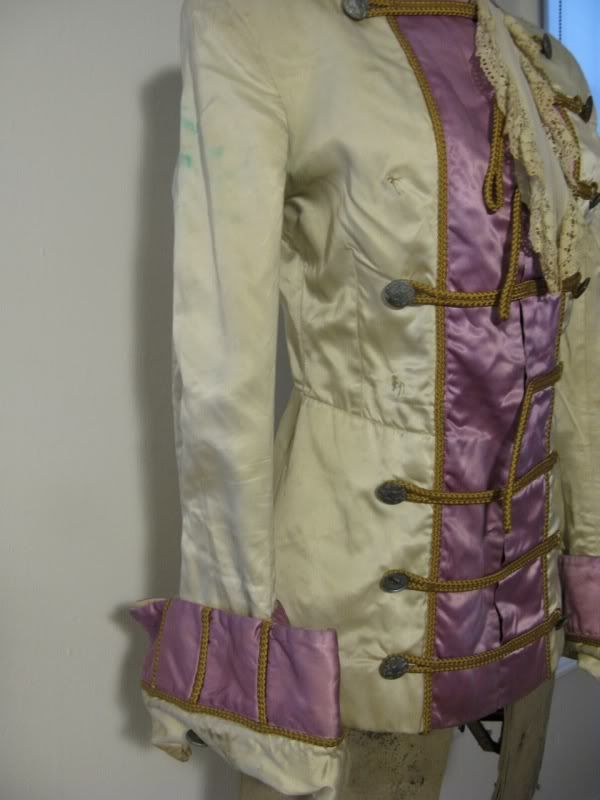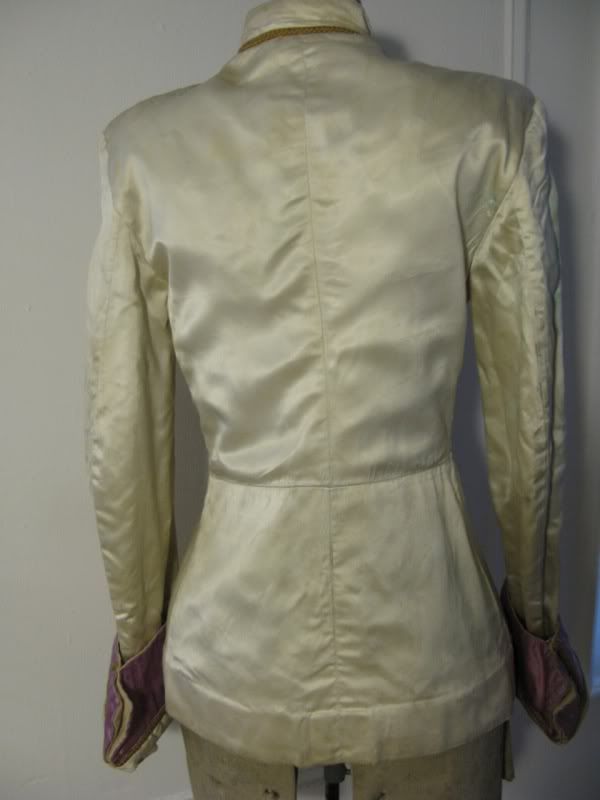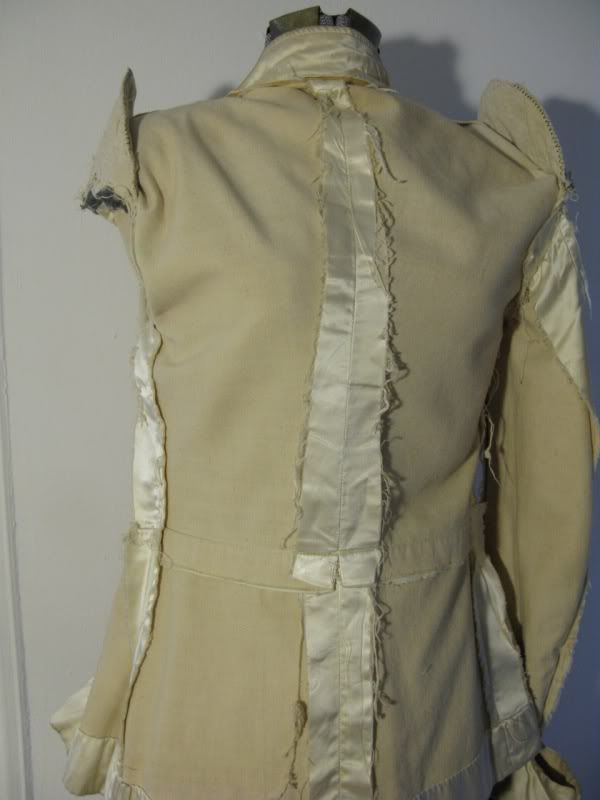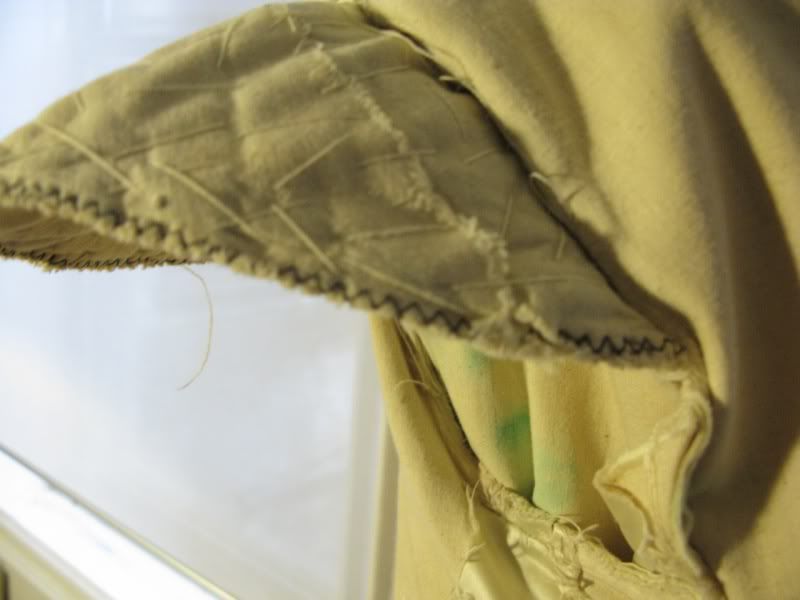rosebudrose
Registered Guest
Edit- Burn Test! Sergeant Pepper\'s Magical Mystery Jacket!
While this amazing, weird, beautiful jacket is in pretty shoddy condition, I couldn't bear leaving it behind on my last treasure hunt. It's easily one of the neatest pieces I've ever found, but also one of the most puzzling. The only conclusion I've come to so far is that it's 1940's or older, and probably a costume piece. It definitely looks handmade, although skillfully. Most of the buttons are missing, it's dirty as sin, and there's a tear in the back, but other than that, it's very sturdy. The hooks and eyes alternate, and are a kind I've seen mostly on late 19th/early 20th century clothing. It looks like silk, and it's lined with muslin. The jabot is crepe silk with a crocheted lace edge.
Does anyone know what to make of this strange and amazing thing?
(Sorry for the picture overload)






While this amazing, weird, beautiful jacket is in pretty shoddy condition, I couldn't bear leaving it behind on my last treasure hunt. It's easily one of the neatest pieces I've ever found, but also one of the most puzzling. The only conclusion I've come to so far is that it's 1940's or older, and probably a costume piece. It definitely looks handmade, although skillfully. Most of the buttons are missing, it's dirty as sin, and there's a tear in the back, but other than that, it's very sturdy. The hooks and eyes alternate, and are a kind I've seen mostly on late 19th/early 20th century clothing. It looks like silk, and it's lined with muslin. The jabot is crepe silk with a crocheted lace edge.
Does anyone know what to make of this strange and amazing thing?
(Sorry for the picture overload)






